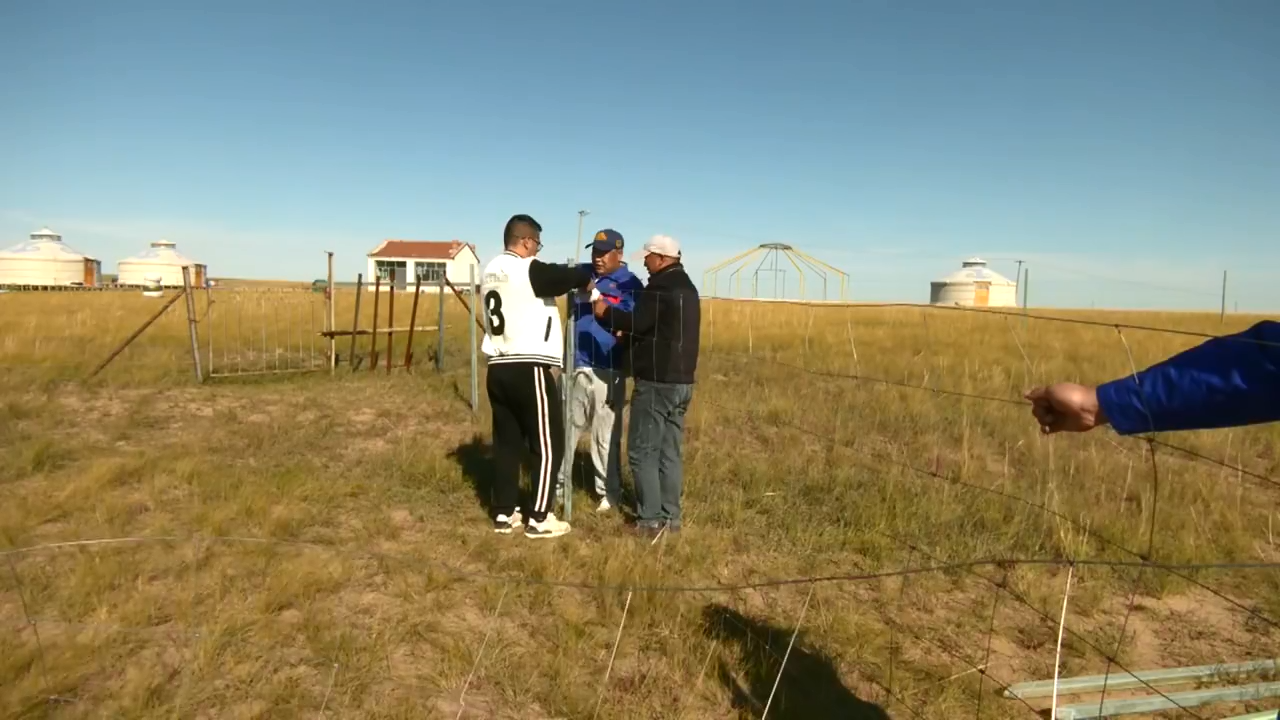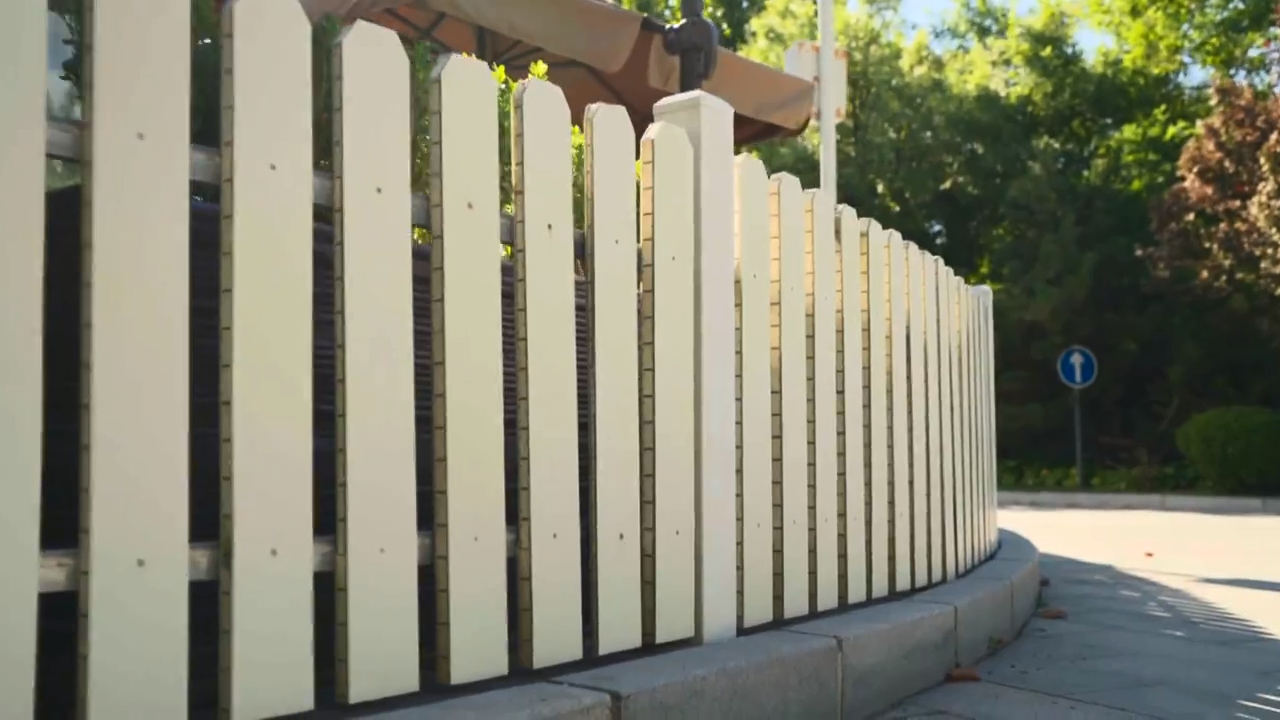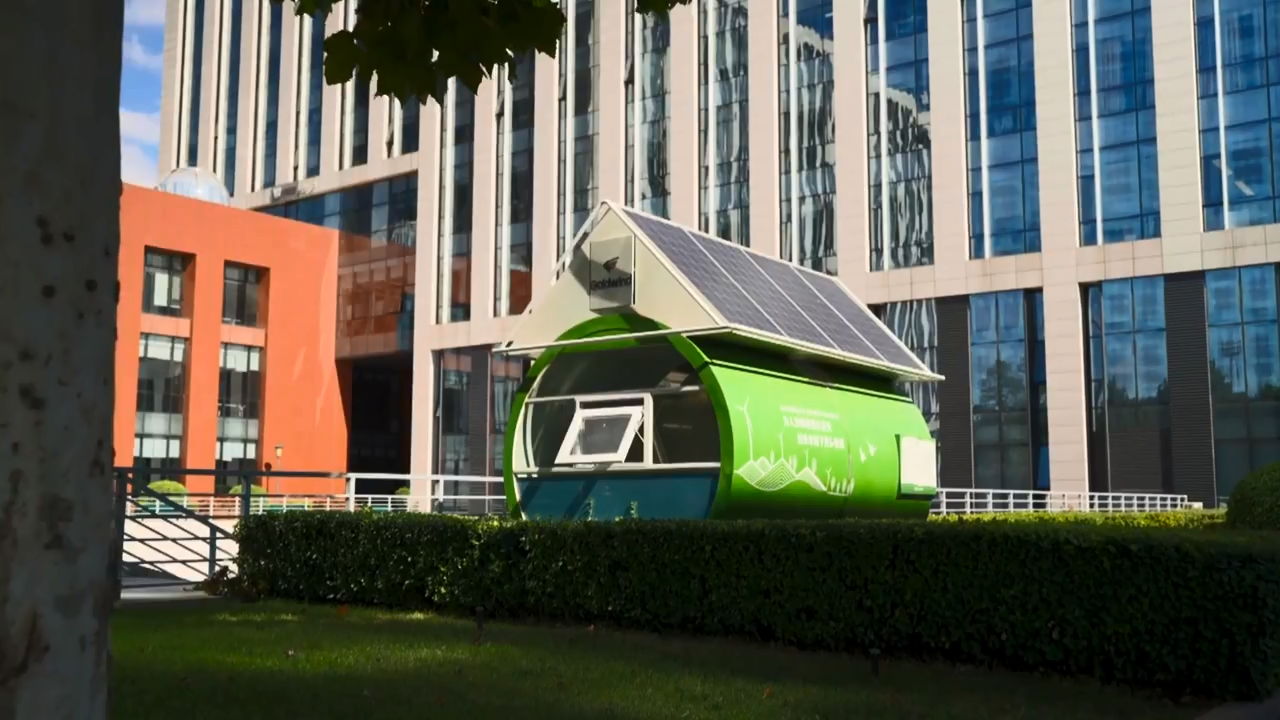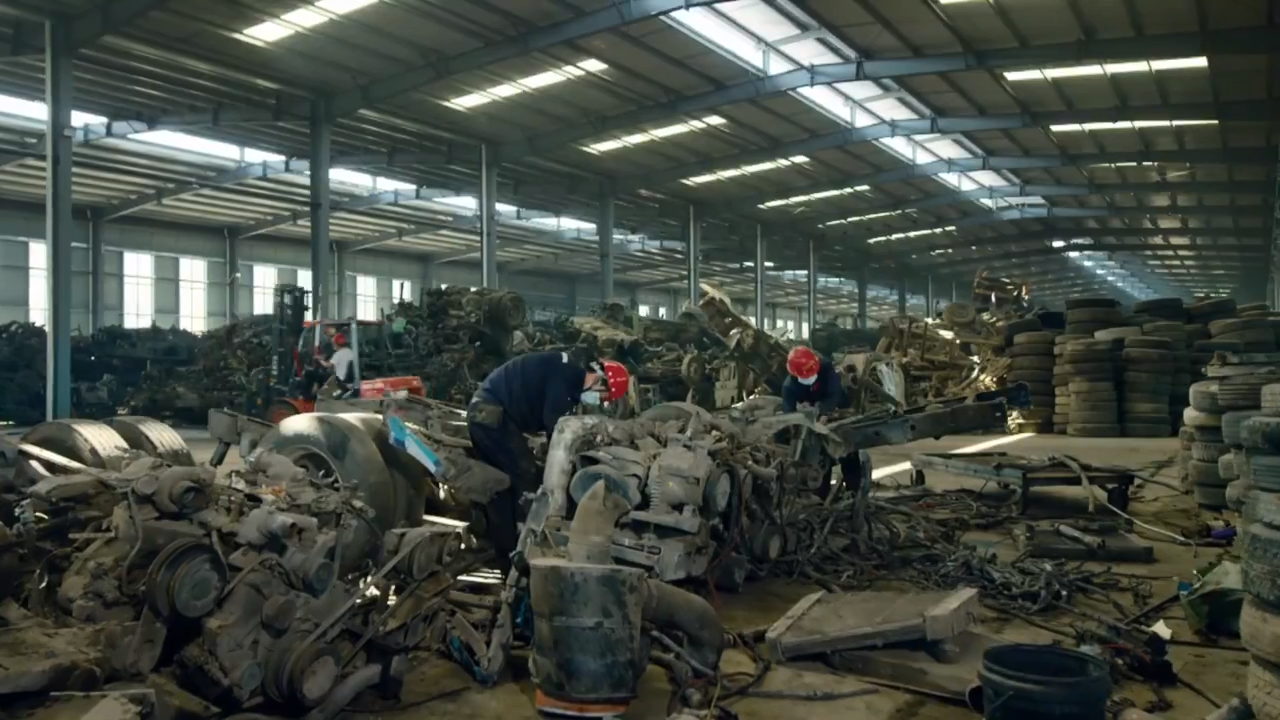
Herdsmen replace the fences on their pasture in north China's Inner Mongolia Autonomous Region. /CMG
Herdsmen replace the fences on their pasture in north China's Inner Mongolia Autonomous Region. /CMG
These herdsmen are replacing the fences on their pasture in north China's Inner Mongolia Autonomous Region. Surprisingly, the new ones are made out of "retired" blades of wind turbines, giant equipment used to generate electricity from wind.
In the past, the fences were usually made of wood or steel, which were easily damaged and needed to be replaced every three or four years. However, the life span of the new fence can reach 30 years, which can save resources and is economical.
Why are the blade-made products so strong and durable?What else can be obtained after the wind turbines were recycled?

The decommissioned blades, generators, towers and other parts of wind turbines are in storage area. /CMG
The decommissioned blades, generators, towers and other parts of wind turbines are in storage area. /CMG

Raw material (a type of fiber) is extracted from the equipment that handles the decommissioned blades. /CMG
Raw material (a type of fiber) is extracted from the equipment that handles the decommissioned blades. /CMG
Turned into resources
The gigantic wind turbine blade is a thin-shell structure made by composite materials – fiber-reinforced plastic, or fiberglass, that is light weight and of high strength. When they reach the end of their life expectancy of around 20 years, how they can be recycled and reused was once a headache for many manufacturers.
With the first facility that can handle the fiberglass in an environmental-friendly way in China, raw materials for various industries can be extracted from the decommissioned blades, including a type of fiber which increases crack resistance in cement and raises the durability when used in asphalt and insulation materials.
In addition to turning them into resources, the old blades and other parts of the wind turbines can be remanufactured by some high-tech means into public facilities.

3D-printed flower fences made from the old blades. /CMG
3D-printed flower fences made from the old blades. /CMG

A solar-powered hut made from a part of the wind turbine tower. /CMG
A solar-powered hut made from a part of the wind turbine tower. /CMG
Turn into public infrastructure
China's first "carbon neutral" smart park in Beijing recently completed 3D-printed flower fences made from the old blades, as well as a solar-powered hut from a part of the wind turbine tower.
The tubular part of the blades are even designed into toilets.
"The strength, durability and the space (of the blade) is enough, so it is particularly suitable. Through the combination of creativity and the needs of life, we can explore its potential value," said Liu Xin, a deputy director at the Academy of Arts and Design, Tsinghua University.
Besides, by cutting the blades into different shapes and sizes, the new design can bind sand in deserts and become homes for fish and corals at the bottom of sea.

A workshop taking apart the old cars. /CMG
A workshop taking apart the old cars. /CMG
Circular economy
If the materials in decommissioned wind turbines can be effectively recycled, it will greatly improve the self-sufficiency rate of raw materials in China, reduce the dependence on upstream resources, and help alleviate the tension between supply and demand of raw materials, experts say.
At the same time, it can effectively reduce the carbon emissions generated in the production process.
This year, the first recyclable thermosetting resin blade in China has successfully come off the assembly line. It can not only be recycled and degraded, but the composite material recovery rate can reach more than 95 percent.
"The circular economy is conductive for environmental improvement and sustainable development. The reuse of resources is essential to the resources balance, is of great significance to the sustainable and high-quality development of the national economy, and is an important starting point for green and low-carbon pathway," said Xu Junxiang, the head of China National Resources Recycling Association.